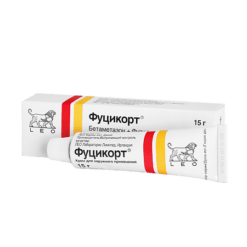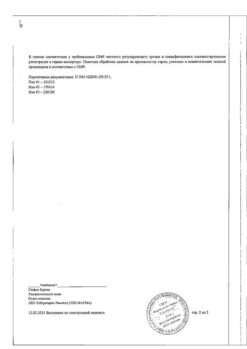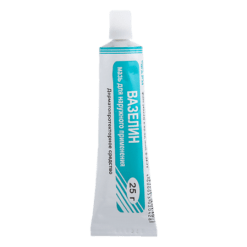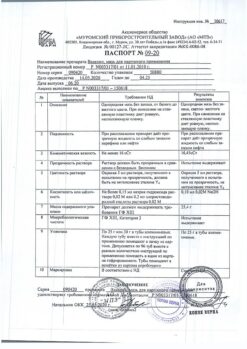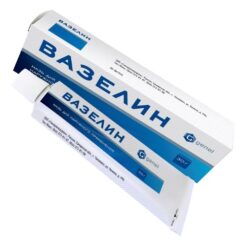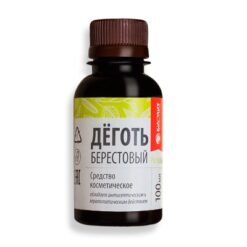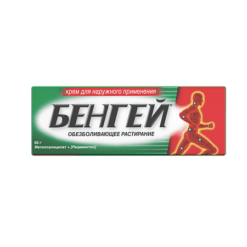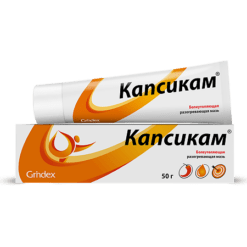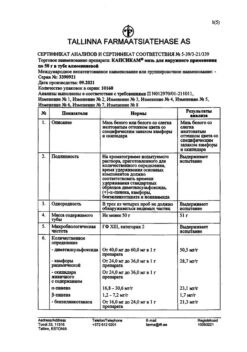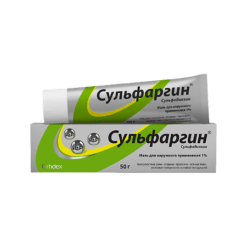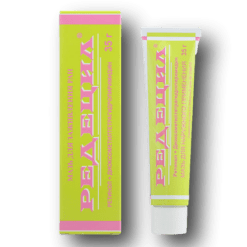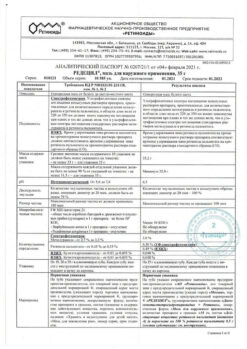No products in the cart.
Fucicort, cream 30 g
€1.00
Out of stock
(E-mail when Stock is available)
Description
A combination preparation for external use containing antibiotic of polycyclic structure and GCS.
Fusidic acid is an antibiotic of polycyclic structure. Active mainly against Gram-positive bacteria, in particular – Staphylococcm aureus, Propionibacterium acnes and Corynebacterium.
The mechanism of action is associated with inhibition of bacterial protein synthesis. After 30 years of use resistance of bacteria to fusidic acid is rare (1-3%). Most often, bacteria resistant to penicillin and other antibiotics are sensitive to fusidic acid.
Betamethasone belongs to the group of strong GCS (group III) and has pharmacological action, suppressing local immune reactions, including vasodilation, swelling and pain.
Indications
Indications
Infectious and inflammatory skin diseases caused by microorganisms sensitive to fusidic acid:
– dermatitis;
– infected allergic eczema;
– toxiderma.
Active ingredient
Active ingredient
Composition
Composition
The cream for external use is homogeneous, white in color.
1 g fusidic acid hemihydrate 20.4 mg, which corresponds to the content of fusidic acid anhydrous
20 mg betamethasone valerate 1.214 mg,corresponding to betamethasone 1 mg
Ancillary substances:
macrogoal cetostearate – 18 mg,
cetostearyl alcohol (cetyl alcohol 60%, stearyl alcohol 40%) – 72 mg,
Chlorocresol – 1 mg,
sodium dihydrophosphate dihydrate – 3 mg,
liquid paraffin – 60 mg,
paraffin soft white (contains about 10 ppm α-tocopherol) – 150 mg,
sodium hydroxide – q.s.,
Purified water – up to 1 g.
How to take, the dosage
How to take, the dosage
It is used externally.
Adults and children apply a thin layer of cream on the affected area 2-3 times a day. The course of treatment should not exceed two weeks.
Interaction
Interaction
Drug interactions of Fucicort are not known.
Special Instructions
Special Instructions
Caution should be used with perianal or genital itching; on large areas of skin, under occlusive dressings, face, areas of diaper rash; in the periorbital area because glaucoma may occur.
Bacterial resistance associated with the use of fusidic acid has been noted.
As with other antibiotics, overuse or repeated use of the drug may increase the risk of antibiotic resistance.
Do not apply the drug to open wounds and mucous membranes.
If use of Fucicort cream causes skin irritation or hypersensitivity, it should be discontinued and other appropriate treatment started.
When treatment is discontinued, withdrawal syndrome may occur, which may be manifested by redness, burning or tingling of the skin or exacerbation of psoriasis. These effects can be prevented by gradual withdrawal of the drug.
After long-term external treatment with potent corticosteroids, atrophic changes are most common on the face, external genitalia, inner side of the upper and lower extremities, compared to other areas.
The drug contains chlorocresol, which can cause allergic reactions, and cetostearyl alcohol, which can cause local skin rashes (such as contact dermatitis).
Use in pediatrics
. Because children have a greater surface area to body weight ratio than adults, children are at greater risk of suppression of hypothalamic-pituitary-adrenal function and development of Cushing’s syndrome with any topical GCS. Prolonged treatment of children with GCS may cause abnormalities in growth and development.
The drug should be used in the lowest effective dose when treating children.
Influence on driving and operating machinery
The drug does not affect the ability to drive and operate machinery.
Pediatric use
It is contraindicated in children under 1 year of age.
Because children have a greater surface area to body weight ratio than adults, they have a greater risk of suppression of hypothalamic-pituitary-adrenal function and development of Cushing’s syndrome with any external GCS. Prolonged treatment of children with GCS may cause abnormalities in growth and development.
The drug should be used in the lowest effective dose when treating children.
Contraindications
Contraindications
– rosacea;
– perioral dermatitis;
– juvenile acne;
– primary bacterial, viral and fungal skin diseases;
p> – tuberculosis of the skin;
– cutaneous manifestations of syphilis;
– children under 1 year of age;
– hypersensitivity to the components of the drug.
Side effects
Side effects
Frequency determination of adverse reactions: very frequently (>1/10), frequently (>1/100 and <1/10), infrequently (>1/1000 and <1/100), rarely (>1/10 000 and <1/1000), very rarely (<1/10 000).
Skin and skin appendages: infrequent – rash, exacerbation of eczema, skin irritation, skin itching, burning or tingling sensation of skin; frequency unknown – skin atrophy, contact dermatitis, erythema, dry skin.
While these reactions have not been noted in clinical studies of Fucicort, external use of GKS may cause telangiectasia and stretch marks, especially with long-term use.
As with other GKS, folliculitis (steroid acne), hypertrichosis, perioral dermatitis, depigmentation, hemorrhagic rash, pink acne, sweat, skin maceration, and systemic GKS effects may occur.
Allergic reactions: frequency unknown – urticaria.
Overdose
Overdose
Symptoms:Extreme, prolonged external use of GCS may suppress pituitary and adrenal function, which can lead to secondary (usually reversible) adrenal insufficiency.
Treatment:conducting symptomatic therapy.
Additional information
| Weight | 0.040 kg |
|---|---|
| Manufacturer | Ireland |
| Medication form | exterior cream |
Other forms…
Related products
Buy Fucicort, cream 30 g with delivery to USA, UK, Europe and over 120 other countries.


